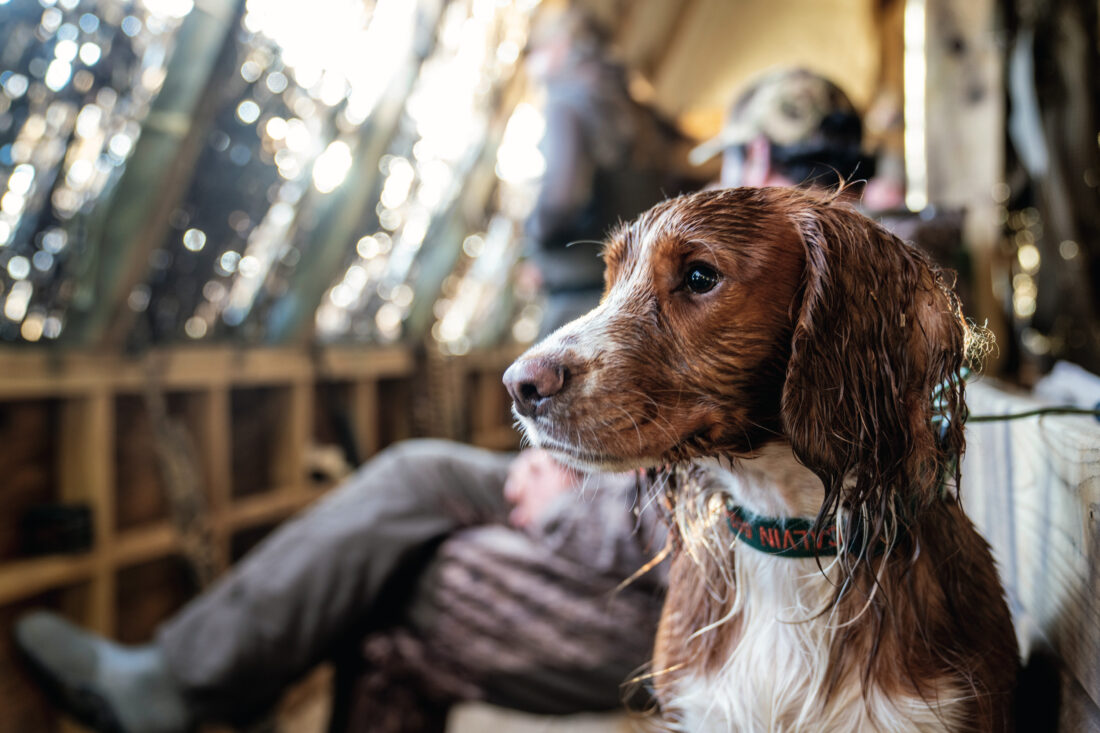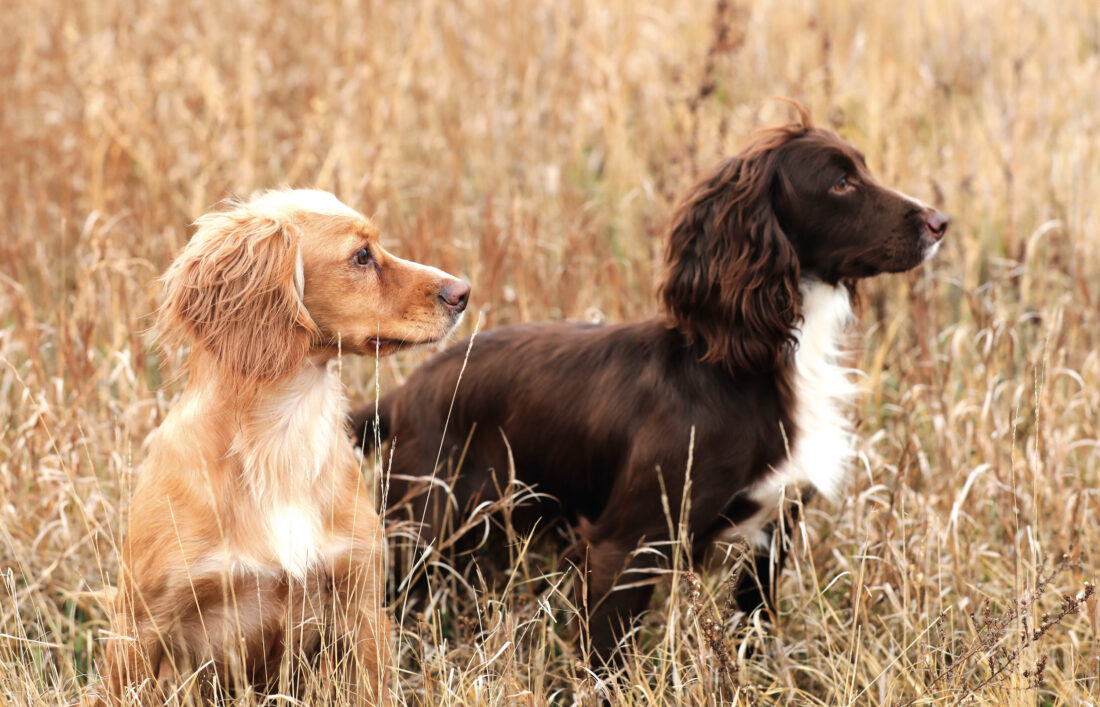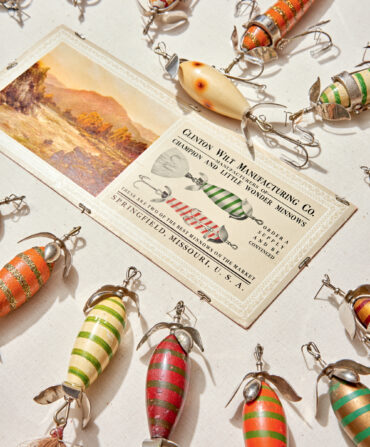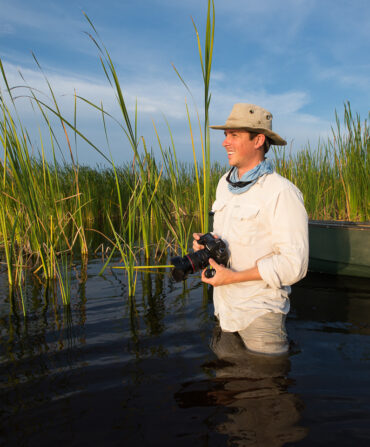Don’t misunderstand: Bill Webb still loves a pointing dog. As a kid, he followed English pointers and setters through the longleaf pine and wire grass of his family’s farm near Rockingham, North Carolina. As an adult, he’s turned those same acres into the Webb Farm, a luxury quail lodge in the Sandhills region where he keeps a finely tuned kennel of classic bird dogs. But Webb has signed on completely to the English cocker spaniel craze. The dogs are brought to ground after a pointing breed pins down a covey of quail. While the pointer or setter stays staunch, the little cockers work dense cover close and fast to flush even the most recalcitrant of bobwhites.
While it’s impossible to quantify just how popular flushing cockers have become, it’s clear that more and more private quail lodges and individual hunters are adding the breed to their kennels. Webb gets it. “Our guests are absolutely enamored with these feisty little joyful things, riding with them on the hunting cars,” he says. Today, Webb keeps cockers in the lodge’s own kennel, and each of the ten Webb Farm guides owns a flushing dog. The overwhelming majority, Webb says, are cockers.
The dogs may have arrived fairly recently on Southern quail properties, but the breed, in fact, is an ancient hunting dog. While the cocker breed was registered with England’s Kennel Club in 1873, the use of spaniels as hunting dogs reaches back to at least the fourteenth century. The dogs were used to roust fowl for hunting falcons and hares for hunting greyhounds. Spaniels were put to work retrieving quail, ducks, pheasant, and grouse. The breed’s name is derived from “woodcock,” a bird whose dense, tangled habitats allow the high-energy and low-to-the-ground cockers to shine.
From a safety perspective, flushing cockers change the choreography of a typical quail-lodge shoot. Instead of guides moving ahead of a pointing dog to thrash brush and put up birds, guides with flushing dogs can hang back a few steps behind the hunters, with a cocker at heel, before sending the canine ahead of the pointing dog to flush the birds. “Now everyone is behind the line of fire,” Webb explains. “It’s hard to overstate the safety factor these dogs bring to the field.”
And how much they improve the hunt. Cockers are insatiable bird finders, relentless on the flush, and well-mannered enough to deliver birds to hand. “These little rascals are like vacuum cleaners out there,” Webb says. When cockers are turned loose, “they’re going to find that bird,” he adds. “Even a bird that doesn’t want to get up is going to get up and fly like hell. They’ll do anything they can to get away from that little whirling dervish coming at them.”
It’s that hunting drive that attracts trainer Kirk McConnor to cockers. The owner of Dog Years Training in Swansea, South Carolina, McConnor has worked with gundogs for nearly twenty years, but he learned only recently that cockers have far more utility than putting up upland game, especially in the South. They excel as dove-field companions and are reliable duck retrievers until it gets too cold. “Cockers are capable of a lot more than riding the mule wagon on a hunt,” he says. “These dogs do their own stunts. They are fantastic all-around hunting dogs.”

That’s partly because of a personality trait shared across the breed: Working cockers, McConnor says, “are genetically wired to stay in contact with you. They seek you out. They want to make eye contact with you.” That helps keep the dogs tight to the hunter, coursing left and right within gun range. While pointers and setters typically work as far as a few hundred yards away from the hunter, cockers tend to stay within fifteen to thirty yards. If a hunt takes place on wide-open agriculture fields, where covering ground is at a premium, a pointer or a setter might be the better choice. But for closer hunts, and for hunters after woodcock, a cocker is hard to beat. “It’s something to experience,” McConnor says. “All of that drive and energy, and you see that they really want to work with you.”
Fearless of cover, with a compact, low build that allows them to worm into dense thickets that would give other dogs pause, cockers bring a different vibe, McConnor says. Things happen fast. There’s no sauntering up to a bird dog on point. “In general, there’s little pause between the dog making game and the bird flushing,” he explains. “You have to be there and be ready to shoot. It’s a kind of teamwork that makes the hunt so much fun.”
No matter the game, English cocker owners are united in extolling one particular virtue of hunting with the dogs. “Pointing dogs have an allure all their own,” Webb says, “but for those of us who have spent our lives behind beautiful pointers and graceful setters, these cockers add a kind of happiness to the hunt that I’d never seen before. They just put on a show.”








